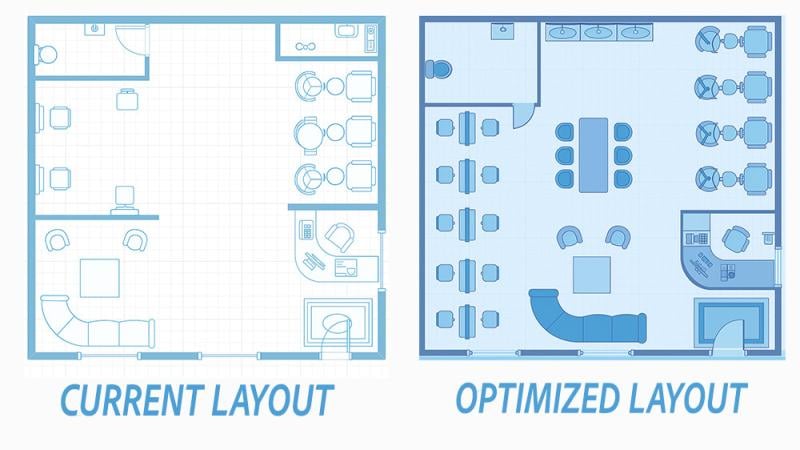From the blowback over Guess’ decision to include AI-generated models in a recent ad campaign, it’s clear that businesses need to be choosy about how they use artificial intelligence.
Outcry hurled at the fashion brand included criticisms about replacing human creatives with technology, and about perpetuating unrealistic beauty standards.
The response wasn't a condemnation of AI in general. The public at large remains enthusiastic about AI technology — but under very specific conditions. That’s why for businesses, AI is a double-edged sword.
Here are some guidelines for beauty and wellness brands on how to use AI in ways that do innovate and don’t alienate.
DO: Use AI to help with marketing copy.
AI can be a godsend for a small business with an equally small marketing budget and lots of copy to produce. But this doesn't mean getting rid of a real writer or editor. Those roles are still required to produce effective copy with AI.

The huge caveat that comes with using AI to write marketing materials, blogs, or social captions is that it often produces incomplete, misleading, or error-filled work.
Not only that, but AI writing tends to be repetitive and long-winded — both marketing killers.
That’s why AI should be used in marketing copy as a first draft, with someone acting as an editor, fact checker, and overall vibe checker. It still saves a bunch of time and can produce great content, but not without some flesh-and-blood input.
DON’T: Use AI to create marketing imagery.
People are generally okay with businesses using AI to perform monotonous tasks and do busy work. They do NOT, however, like it when AI replaces creativity and artistry.
They also don’t want to be bamboozled into thinking an AI image is that of a real person.

Using AI-generated marketing imagery can be misleading at best and can cause harm at worst. No human being can live up to aesthetic standards set by AI: unrealistically perfect hair texture, precisely symmetrical features, artificially even skin tone.
Especially for a brand in the business of making clients feel like the best versions of themselves, using AI to convey those results feels disingenuous.
Stylists don’t like it when clients bring AI images as inspo pics for this exact reason, so don’t advertise your business using AI images. Real people and real results is what your audience wants to see.
DO: Use AI tools for business management.
All across the beauty and wellness industries, businesses are running more efficiently and turning higher profits thanks to AI-powered tools, often incorporated into their management software.
AI-powered smart scheduling that books appointments in hard-to-fill white spaces? Brilliant. AI-driven inventory management telling you what retail is hot or not? Amazing. Virtual assistants that can answer repetitive FAQs? Bravo.
While more complex customer-service interactions via AI have long been discouraged, newer tools are emerging (like Brook AI receptionist, above) that are noticeably better at higher-level customer engagement and management than the limited chatbots we're used to.
DON’T: Use AI tools to replace employees.
With that said, AI should be helping the receptionist do their job, not helping the receptionist out of a job.
Duolingo learned this the hard way. When the language learning app announced in June it was “AI-first,” phasing out contractors and new hires if AI could do their work, the backlash was so hostile the brand went dark for days on social media.
AI should assist humans, not replace them. If your team members have time freed up thanks to AI tools, fill it with opportunities to grow your business and their careers.
What would your bottom line look like if your receptionist had 15 more hours per week to devote to customer service? Or if your general manager could get back a few days each month to spend on recruitment and training?
Use of AI can provide a wealth of opportunities for savvy business owners to think big-picture.
DO: Use AI for problem solving and idea generation.
When you’re trying to solve any of the zillion issues that come with a beauty or wellness business, AI can be your best friend.

It can help optimize your business space layout. It can give you fresh ideas for blog posts, social media videos, marketing campaigns, and promotional events. It can gather information about the buying habits of your target market.
AI won’t always have the perfect solution. But it can usually help you brainstorm, push ideas forward, supply useful info, and come up with alternative perspectives.
DON’T: Rely on AI for data analysis & decisionmaking.
AI can be super handy for condensing and organizing data, but if that data is erroneous or incomplete, any analysis it generates will be off.
You can get AI to analyze more efficiently by improving the quality, quantity, and relevance of the data you give it, and by inputting variables that are unique to your business.

But in the end: you have to bring your human experience and knowledge to the analysis.
Again, use AI as a helpful tool, but not as the authority in interpreting business trends and customer behavior as the basis for important decisions.
You're always the biggest expert when it comes to your brand and your client base, not AI.